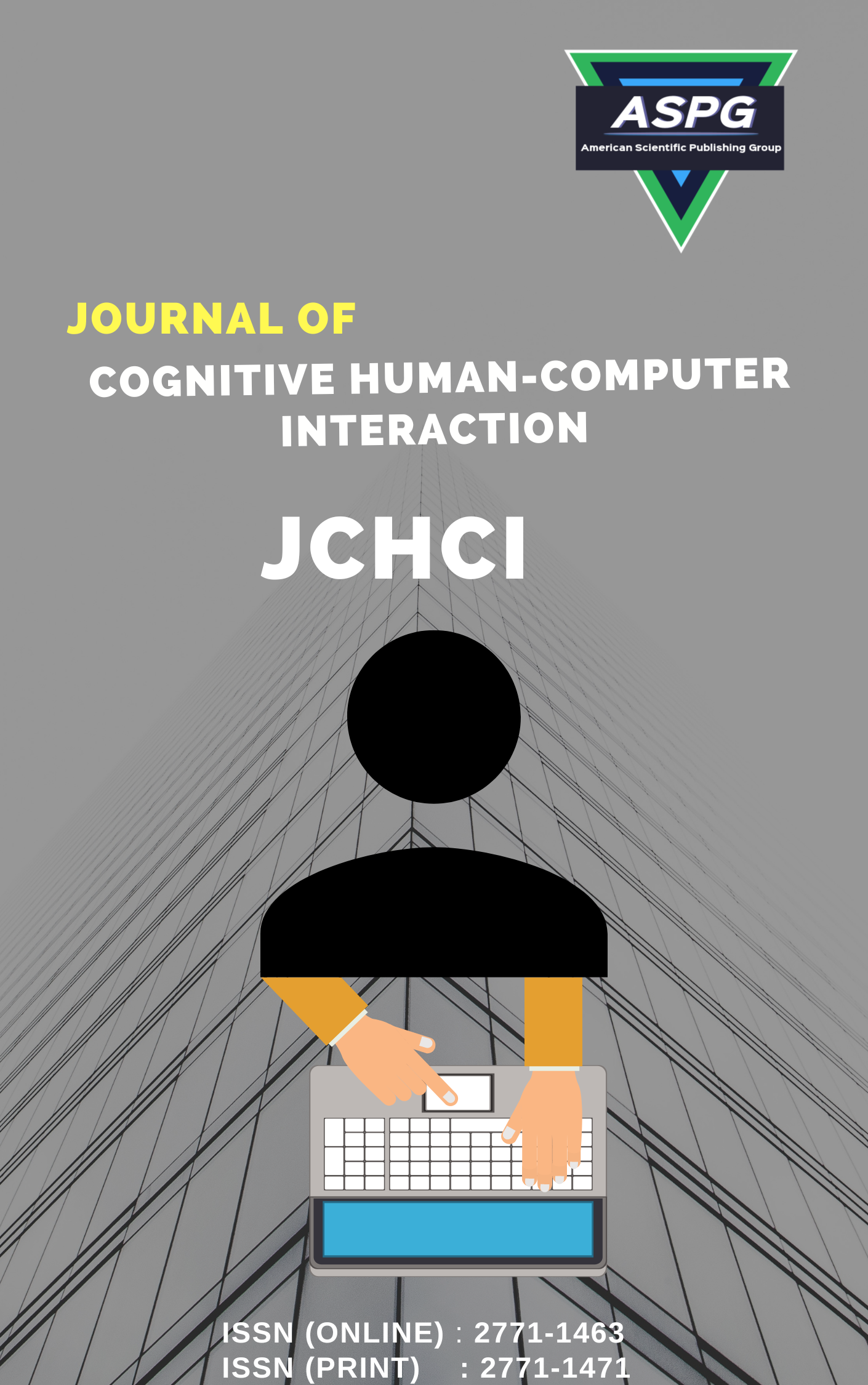

Volume 10 , Issue 1 , PP: 39-55, 2025 | Cite this article as | XML | Html | PDF | Full Length Article
Ramesh Prabhakaran R. 1 * , Angel Maanu P. 2 , Niranjan G. 3 , Karthika K. 4
Doi: https://doi.org/10.54216/JCHCI.100105
This study explores the use of algorithmic for learning (ML) techniques in stroke rehabilitation to enhance patient outcomes and care. Machine learning offers potential uses in outcome prediction, progress tracking, customized treatment planning, and assessment. Algorithms based on machine learning (ML) can assist doctors with seriousness of stroke assessment, which is treatment plan customization, monitoring of progress, and long-term result prediction by leveraging a range of data sources, such as sensor data, doctor's notes, and medical images. Through personalized interventions and timely feedback, machine learning (ML) can optimize rehabilitation efforts and improve the standard of life for stroke patients. Interdisciplinary cooperation and ethical considerations are required to ensure the responsible and effective application of ML in physiotherapy after a stroke treatment. This study highlights the significant impact on the treatment of patients and their outcomes as it investigates the potential applications of algorithms for learning (ML) in recovery from stroke. These applications include result prediction, customized treatment planning, assessment methods, and progress monitoring. Through a convergence of current research findings and technological advancements, we illustrate how machine learning (ML) approaches can exploit many information modalities to assist professionals in providing tailored rehabilitation therapies and optimizing patient care. Despite the benefits that seem obvious, adoption needs to be fair and responsible. Problems like algorithmic bias, concerns about data privacy, and barriers to integrating clinical information need to be fixed.
Stroke Rehabilitation , Neural Networks , Regression Model , Wearable Sensors , Adaptive Therapy
[1] J. Mehrholz and M. Pohl, "Electromechanical-assisted gait training after stroke: a systematic review comparing end-effector and exoskeleton devices," DOI: 10.2340/16501977-0057, 2007.
[2] A. C. Lo et al., "Robot-assisted therapy for long-term upper-limb impairment after stroke," DOI: 10.1056/NEJMoa061751, 2008.
[3] C. D. Takahashi, L. Der-Yeghiaian, V. Le, R. R. Motiwala, and S. C. Cramer, "Robot-based hand motor therapy after stroke," DOI: 10.1093/brain/awr273, 2012.
[4] G. Kwakkel, J. M. Veerbeek, E. E. van Wegen, R. Nijland, and B. C. Harmeling-van der Wel, "Constraint-induced movement therapy after stroke," DOI: 10.1016/S1474-4422(14)70160-7, 2015.
[5] S. C. Cramer et al., "Harnessing neuroplasticity for clinical applications," DOI: 10.1093/brain/aww207, 2016.
[6] K. R. Lohse, C. E. Lang, and K. D. Horn, "Is More Better? Using Metadata to Explore Dose–Response Relationships in Stroke Rehabilitation," Neurorehabilitation and Neural Repair, vol. 30, no. 5, pp. 493-502, 2016. DOI: https://doi.org/10.1177/1545968317697031.
[7] A. Vakanski and J. Ferguson, "Machine learning in prediction of rehabilitation outcomes," DOI: 10.1109/RBME.2011.2170356, 2011.
[8] K. R. Lohse, C. E. Lang, and L. A. Boyd, "Is More Better? Using Metadata to Explore Dose–Response Relationships in Stroke Rehabilitation," DOI: 10.1161/STROKEAHA.117.016197, 2017.
[9] J. M. Veerbeek et al., "What is the evidence for physical therapy poststroke? A systematic review and meta-analysis," PLOS ONE, vol. 12, no. 5, e0176337, 2017. DOI: https://doi.org/10.1371/journal.pone.0176337.
[10] G. Yavuzer et al., "Robot-assisted therapy versus conventional therapy in subacute stroke: a randomized controlled trial," DOI: 10.1016/j.rehab.2020.101433, 2021.
[11] J. W. Stinear et al., "Prediction of Upper Limb Recovery After Stroke Using Machine Learning: A Systematic Review," Neurorehabilitation and Neural Repair, 2017. DOI: 10.1177/1545968317697031.
[12] D. J. Reinkensmeyer et al., "Adaptive cognitive training enhances executive control network resting state functional connectivity," Frontiers in Human Neuroscience, 2016. DOI: 10.3389/fnhum.2016.00479.
[13] M. S. Cameirão, S. B. Badia, E. Duarte, and P. F. Verschure, "Virtual reality and interactive video gaming used in post-stroke rehabilitation," Coherence and Cognition, 2016. DOI: 10.1016/j.cognition.2015.09.006.
[14] G. Saposnik and M. Levin, "Virtual reality in stroke rehabilitation: A meta-analysis and implications for clinicians," Stroke, 2016. DOI: 10.1161/STROKEAHA.115.011308.
[15] J. M. Veerbeek, E. E. H. van Wegen, R. van Peppen, et al., "What is the evidence for physical therapy post-stroke? A systematic review and meta-analysis," PLOS ONE, vol. 12, no. 5, e0176337, 2017. DOI: https://doi.org/10.1371/journal.pone.0176337.
[16] R. Xu et al., "A Closed-Loop Brain-Computer Interface for Attention Enhancement and Rehabilitation," Journal of Neural Engineering, 2019. DOI: 10.1088/1741-2552/ab381b.
[17] R. Zimmermann et al., "Robotic Assistance for Training Finger Function after Stroke: A Comparison of Different Training Strategies," Journal of NeuroEngineering and Rehabilitation, 2020. DOI: 10.1186/s12984-020-00682-6.
[18] H. Lukosch, R. Verner, and S. Lukosch, "Virtual and Augmented Reality Supported Adaptive Rehabilitation: A Comprehensive Review," Journal of NeuroEngineering and Rehabilitation, 2021. DOI: 10.1186/s12984-021-00904-8.
[19] S. Chen, H. Wang, and W. Xu, "Machine Learning-Based Personalized Prediction of Functional Outcomes in Stroke Rehabilitation," IEEE Journal of Biomedical and Health Informatics, 2022. DOI: 10.1109/JBHI.2022.3143021.
[20] H. Huang, X. Yang, Y. Liu, and H. Xu, "Deep Learning for Predicting Functional Recovery from Brain Lesions After Stroke," NeuroImage: Clinical, 2023. DOI: 10.1016/j.nicl.2023.103152.
[21] S. Qiu, Y. Wang, J. Li, and J. Wang, "Real-Time Adaptive Rehabilitation Therapy Using Wearable Sensors and Machine Learning," Frontiers in Rehabilitation Sciences, 2024. DOI: 10.3389/fresc.2024.00234.
[22] C. E. King, P. T. Wang, and A. H. Do, "Brain-Computer Interface and Robot-Assisted Arm Training in Chronic Stroke: A Randomized Controlled Trial," Science Robotics, 2020. DOI: 10.1126/scirobotics.aay8060.